
If you've flirted with the idea of switching your desktop operating system to Linux but never took the leap, the time is now. This week's release of Hardy Heron, an Ubuntu release that will be supported until 2011, offers a freer, more productive space for work and play than ever before. It's not easy jumping blind into a new way of thinking or working, and Ubuntu, the so-called "Linux for Humans" operating system, is no different. For all the online buzz that surrounds the increasingly popular distribution, millions of sane, regular people wonder why they'd ever give up their familiar Mac or PC to venture into something still relatively new. Today we're shining the spotlight on a few great tools and tweaks that make Heron a worthy switch. Photo by BotheredByBees.
Try out and remove Ubuntu like a Windows program
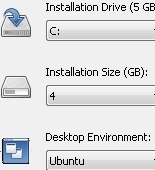
No hard drives to re-organize, no dual-boot setup—just pop an Ubuntu desktop CD in while Windows is running, and you'll get an option to install Ubuntu—inside Windows. Basically, a program called Wubi creates a single file tucked away in Windows and packs a virtual Ubuntu installation inside it. When Windows boots up next time, you'll get an option to boot that pretend Ubuntu installation, and you're off to see how Ubuntu would run on your system. Sick of experimenting and want to try the next step? Uninstall Wubi the same way you'd uninstall any other program.
Put Remember the Milk and other web gadgets on your desktop
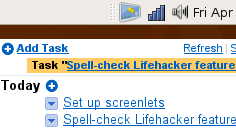
The latest release of desktop widget manager Screenlets can run iGoogle gadgets and other web-based utilities on your desktop. That means modules like Remember the Milk, Google Calendar, and weight tracker The Google 15 can be tucked into a corner for rapid access later. A helpful Tombuntu post explains how to get the most current vision of Screenlets installed in Ubuntu. (Original Screenlets post).
Get full multimedia playback in less than five minutes

Less than two years ago, the best way to get DVDs, Windows Media files, and MP3s to play was to use Automatix, a tool that made installation a one-click affair, but could cause headaches when installing other programs or upgrading to new versions. Now there's the Medibuntu repository, a single stop for enabling multimedia playback and installing third-party apps and upgrades. Need help installing the good stuff? Head to Medibuntu's wiki page and copy and run the appropriate codes for your system.
Run Windows XP and other systems inside Ubuntu with VirtualBox
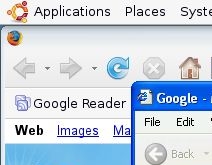
Few people can comfortably leave the Windows world behind entirely, whether due to web sites that only play nice Internet Explorer or Outlook/Office requirements of the job. Luckily, getting Windows up and running inside Linux has never been easier than with VirtualBox, a free virtualization tool that makes running one system inside another as easy as can possibly be. I used VirtualBox to create seamless XP windows inside Linux, and found that, in most cases, if you can install XP, you can get it running in VirtualBox.
Control your system from the keyboard with GNOME Do
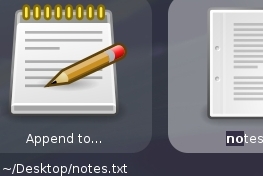
I know I'll catch flak from certain die-hard Quicksilver advocates (how's it going, Adam?), but application launcher GNOME Do is shaping up to be an honest-to-goodness Linux counterpart, if not equivalent. Trade text between files, start emails, IMs and even Twitters, query your Firefox search plugins, and much more. What's more, work is moving forward on that key third "indirect object pane," moving this little program that could toward the automation sweet spot.
Tweak your desktop however you want it
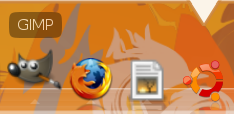
If you're a Mac fan or just familiar with OS X's interface, the GNOME-based Ubuntu has got a turbo-charged dock of its own, the Avant Window Navigator (AWN), that can be loaded with some seriously cool applets, like an inline mail notifier, to-do organizers, a Google- and Outlook-compatible calendar, and much more (here's a guide to installing and extending AWN, if you're interested). More the Windows-style bottom toolbar type? You can re-arrange the built-in toolbars to your heart's content. If none of those options feels creative or different enough, however, you can tweak to your heart's content with the new KDE 4, a desktop environment that can be substituted or combined with Ubuntu's default GNOME look (and available as a "cutting edge" Kubuntu system. Combined with the crazy amount of desktop effects available through Compiz Fusion (previously explained in detail), your desktop is your blank canvas.
Keep your open-source apps' settings and plug-ins
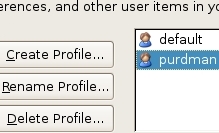
More and more open-source apps are being released not just with Linux versions available, but with nearly fully-featured importing and sharing of profiles, plug-ins, and all the other stuff you've spent quality time getting just so. And since Ubuntu now has a built-in ability to read and writes to Windows-formatted disks, you don't even have to move a thing to see your Firefox bookmarks, Thunderbird mail accounts, and Pidgin buddy lists rise up to meet you. Check out our guide to dual-booting with a single data store for details on getting the most from open-source apps across two operating systems.
These are, of course, my own picks of productivity boosters and newb-friendly progress we've seen in Ubuntu since the last time we rounded up our favorite Ubuntu applications, and some still-worthy apps and tweaks before that. What drove you to check out the free, open-source OS? How would you entice your solidly Mac- and PC-based friends to to pop in a live CD? Let's hear it in the comments.
Kevin Purdy, associate editor at Lifehacker, remembers asking his Linux-pushing friend what a swap partition was. His weekly feature, Open Sourcery, appears every Friday on Lifehacker.






